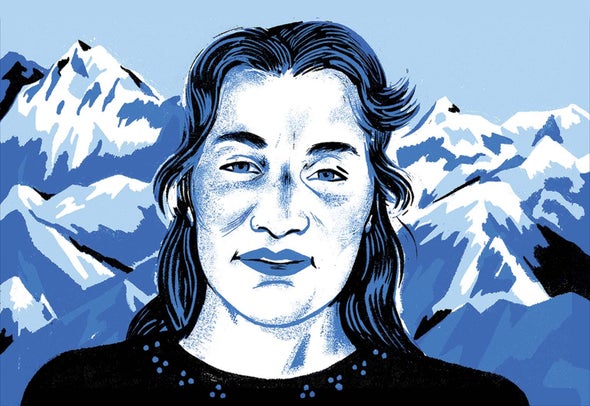A very sad piece of news in 2022 was the death of Hilaree Nelson at age 49. A premier ski mountaineer, Hilaree held numerous firsts, including the first ski descent from the summit of Lhotse (next door to Mount Everest), the first ski descent of Papsura in India (and known as the “peak of evil” because of its exceptional danger), and the first person to ski the Five Holy Peaks of Mongolia.
Hilaree helped to break the barrier of “women’s firsts.” When people spoke of her, they didn’t say she was one of the world’s great female mountaineers. They said she was one of the world’s great mountaineers. In 2018 she succeeded Conrad Anker—who had climbed Everest three times, twice without oxygen—as captain of the North Face Global Athlete Team, cementing her position as one of the greatest adventurers ever.
Tragically, after reaching the summit of the world’s eighth highest peak, Mount Manaslu in Nepal, with her life and ski partner Jim Morrison, Hilaree was caught in an avalanche and fell to her death.
I had met Hilaree through our mutual work with Protect Our Winters (POW), a nonprofit advocacy group that works to educate the outdoors community and industry about climate change and mobilize them into action. Founded by world-class snowboarder and businessperson Jeremy Jones, POW brings athletes, such as Hilaree, to speak with students, community groups, business leaders, the U.S. Congress, and others about the changes they are seeing around the globe. As Hilaree wrote, “Climate change is real. I know this because I’ve seen it with my own eyes.”
In 2018 we appeared together at two events at the World Economic Forum in Davos, Switzerland. One was a panel discussion; the other featured Hilaree discussing her life’s work and passion, including a startlingly honest discussion of her mistakes, including some very costly ones. She described a 2014 expedition that she led in an attempt at the first summit of Hkakabo Razi in Myanmar, where her team nearly ran out of food. Hilaree told us how the team “broke,” how she had struggled to finish the expedition, and how the experience nearly broke her.
The World Economic Forum is populated by well-known, influential and eloquent people—our panel included former U.S. vice president Al Gore—but often audiences fidget. There’s a lot to take in. When Hilaree spoke, however, her listeners were rapt. After the event, people swarmed her, eager to hear more, ask a question, or just to say hello. When we dined later, a 14-year-old girl came up to our table to ask Hilaree for her autograph.
I’ve thought a lot since then about what made Hilaree so inspiring and also about what makes great scientists inspiring. Great scientists may not put their lives at risk the way Hilaree did, but they also inspire awe, admiration and requests for autographs. Athletes and scientists share one thing: the ability to do things that other people simply can’t do. In theory, this could make us feel small and insignificant, but that’s not what I’ve observed. Rather we are reminded that things that may seem impossible might not be.
Both great athletes and great scientists are blessed with conspicuous talent, but they also work hard and push themselves in extraordinary ways. When we are around them, we can think—even if subconsciously—that maybe if we push ourselves, we can do more than we thought possible, too. Most of us will never climb Everest, much less ski it—and nor should we try—but we all have the capacity to do more than we have done before.”


